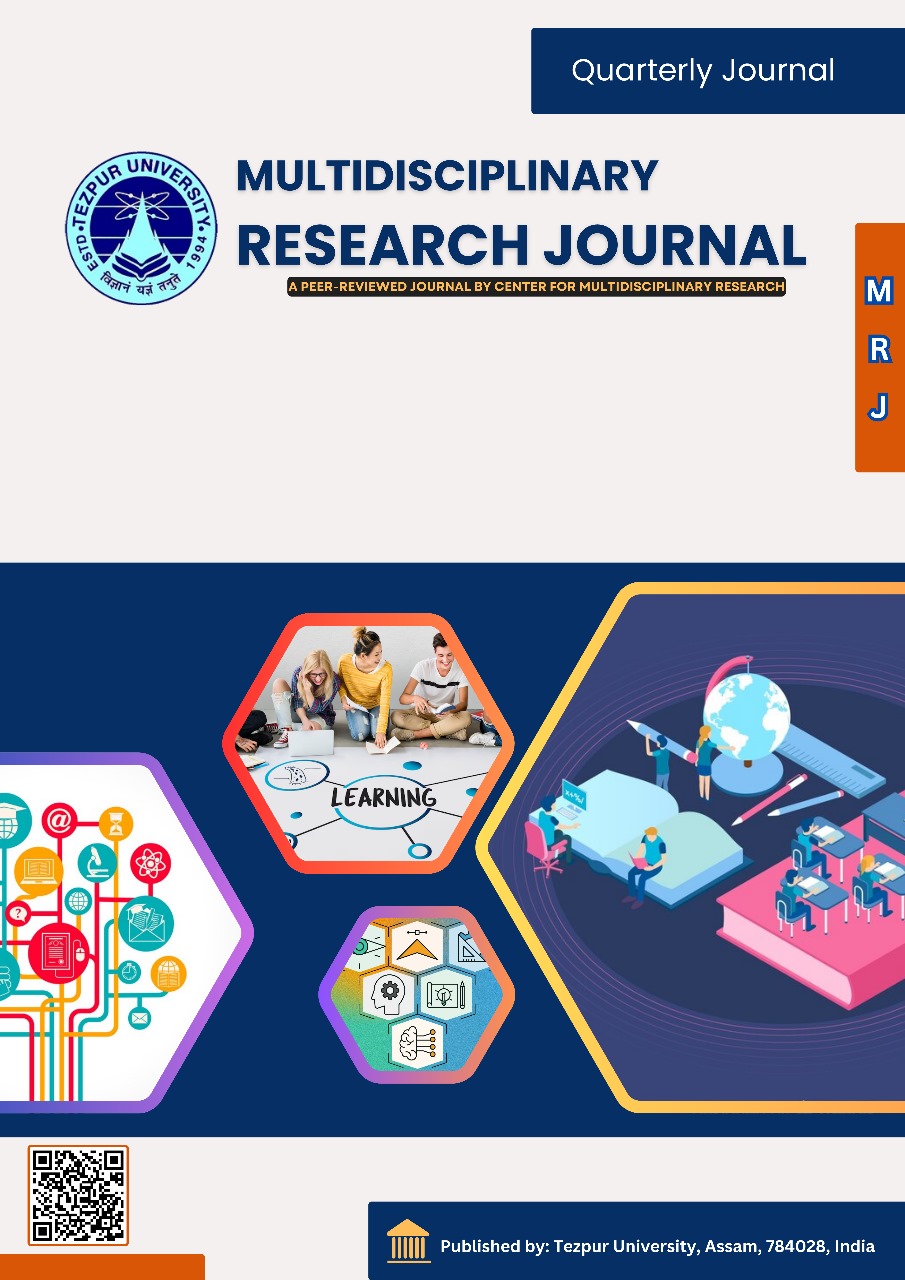The historical significance of the Ache lhamo performance of the Monpa tribe of Arunachal Pradesh
DOI:
https://doi.org/10.63635/mrj.v1i2.24Keywords:
Ache lhamo, Monpa, Arunachal Pradesh, Tibetan performing artsAbstract
This paper is a historical examination of the Ache lhamo performance, a vibrant tradition of the Monpa tribe of Arunachal Pradesh, India. Ache lhamo performance is enacted through the medium of dance. The performers are royal, celestial and symbolic figures, representing the human and divine.The Monpas have successfully preserved this performance, which continues to resonate with the Tibetan performing arts today. The performance becomes is an integral part of the Monpa culture of the state. However, the Ache lhamo faces numerous challenges that threaten its preservation are influence of modernization and urbanization that has led to a decline in the number of skilled performers. Despite the challenges, Monpas have contributed in preserving Ache lhamo till to this date. This study sheds new light on the historical connection between the Ache lhamo of Arunachal Pradesh and ancient Tibet, contributing to our understanding of cultural exchange and heritage preservation in the region. Ethnographic method was employed to understand the social aspects of Ache lhamo in this paper.This study was conducted mainly in the West Kameng district of Arunachal Pradesh, and utilised participatory observation to explore the Ache lhamo tradition.
Downloads
References
[1] Snyder, J. Preliminary study of the Lha mo, Asian Music 1979, 23–62, https://www.jstor.org/stable/8339862.
[2] Lobsang, D. (transled from the Tibetan by C.B. Josayma and M. Tsering) Lhamo: The folk opera of Tibet, The Tibet Journal 1984, 13–22, https://www.jstor.org/stable/43300123
[3] Ross, J. Lhamo Opera from the Roof of the World, First Edition, Paljor Publications, 1994
[4] Tibetan Institute of Performing Arts. Available online: https://tipa.asia/ache-lhamo/(accessed on 10 October 2024)
[5] Schechner, R. Performance Studies: An Introduction, Third Edition, New York, Routledge, 2013
[6] Mayilvaganan, M.; Khatoon, N.; Bej, S. Tawang, Monpas and Tibetan Buddhism in Transition, eBook, Springer Nature, Singapore, 2020
[7] Gerner, M. Chakzampa Thangtong Gyalpo, First Published, Bhutan, The Centre for Bhutan Studies, 2007
[8] Kalmus, M. Remarks on selected bridges of Thangtong Gyalpo, Journal of Comparative Cultural Studies in Architecture 2015, 20–32, http://www.jccs-a.org/issue-08-2015/
[9] Ahmed, S. J. Tibetan Folk Opera: ‘Lhamo’ in Contemporary Cultural Politics, Asian Theatre Journal 2006, 149–178, https://www.jstor.org/stable/4137092
[10] Dompnier, R. Traditions of the Brokpa of Merak and Sakteng, Ministry of Home and Cultural Affairs, Royal Government of Bhutan (RGoB), 2007
[11] Attisani, A.; Ludbrook, G. Tibetan Secular Theatre: The Sacred and the Profane, A Journal of Performance and Art 1999, 1–12, https://www.jstor.org/stable/3245961
[12] Barker, C. Cultural Studies Theory and Practice, Second Edition.; Sage Publication, London, 2006
[13] Dorson, R. M. Folklore and Folklife, The University of Chicago Press, Chicago, 1972
[14] Fitzgerald, K. Tibetan Opera in and outside the Tibet Autonomous Region, Asian Theatre Journal 2004, 270–278, https://www.jstor.org/stable/43187296
[15] Schrempf, M. Tibetan Ritual Dances and the Transformation of Space, The Tibet Journal 1994, 95–120, http://www.jstor.org/stable/43300508
[16] Mizuno, K.; Tenpa, L. Himalayan Nature and Tibetan Buddhist Culture in Arunachal Pradesh, India A Study of Monpa, eBook, Springer Publication, Japan, 2015
Downloads
 Abstract Display: 592
Abstract Display: 592  PDF Downloads: 483
PDF Downloads: 483 Published
Issue
Section
License

This work is licensed under a Creative Commons Attribution-NonCommercial 4.0 International License.
Copyright © Author(s) retain the copyright of this article.




